#node graph
Explore tagged Tumblr posts
Text
Random Mouse Algorithm
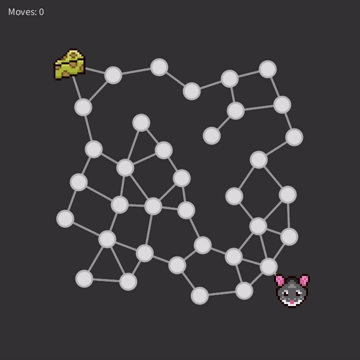
The 'Random Mouse Algorithm' is the best maze solving algorithm in the universe. It uses less memory than other wasteful pathfinding algorithms like 'Breadth First Search' and 'A-star'. Since it picks a random node at every junction.
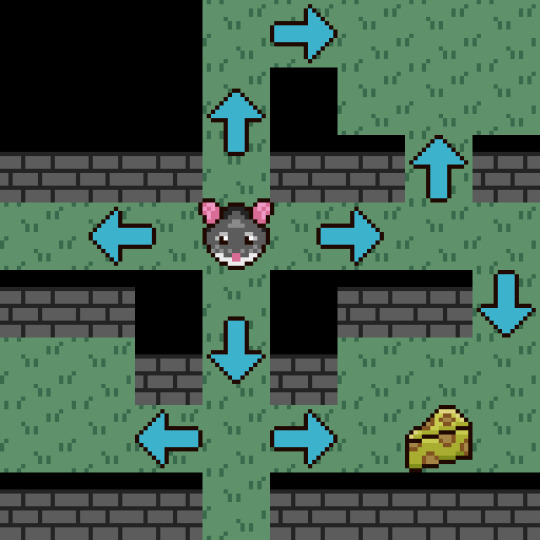
So there is no need for complicated containers like queues and stacks. The only downside, it's very slow… But it's guaranteed to find the goal (or cheese) eventually! It also won't find you the shortest path, but there is nothing wrong with taking the scenic route 🐭🧀
#pixel art#ドット絵#gamedev#indiedev#game development#maze#pathfinding#search algorithm#node graph#mouse#cheese
23 notes
·
View notes
Text
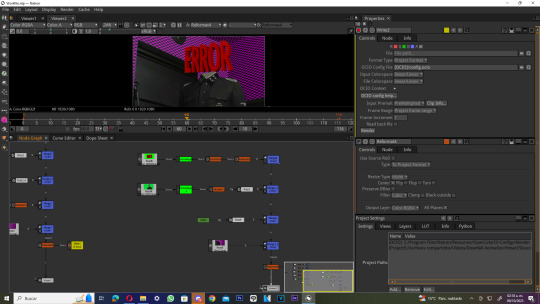
Relearning some of Nuke's features through Natron for an uncoming video.
So far, it has been pretty fun :3
0 notes
Text
i do love it when i wade through a mass of online-only proprietary bullshit software to eventually find that there's a small foss library that does exactly what i want it to and a kde tool to view the output, we love happy endings
#this time it was graphviz#dot markup with a graph viewer is a very elegant solution to what i was trying to do!#namely visualize my polycule#which generalizes very nicely as a graph of interliked nodes#linux#open source#graphing
107 notes
·
View notes
Text
help i’m at the point of the comp sci magic fantasy (still foundryside yes) where there are graph theory diagrams inserted into the text… i continue to love the commitment here. these books know exactly what they want to do and nothing will stop them not even “good prose”
#text tag#like an example of a connected graph with 4 nodes to show how the telepathy magic is working. slay
11 notes
·
View notes
Text

A map of every single band on the Metal Archives as of March 1st of this year, using the same dataset I used for this site. Each individual dot represents a single band, and each line indicates that two bands have a member in common.

A closeup, showing the lines in a bit more detail.
There are around 177k bands on the Metal Archives, and, of them, about two-thirds can be connected to one another by common members.
#metal#metalarchives#data visualization#social networks#heavy metal#fun fact if you make a graph with 177 thousand nodes the graph visualization software will shit itself and die#so if I wanna visualize any sort of analysis I'm probably gonna need to figure out how I can pare this whole mess down#but I think this kinda looks cool
17 notes
·
View notes
Text
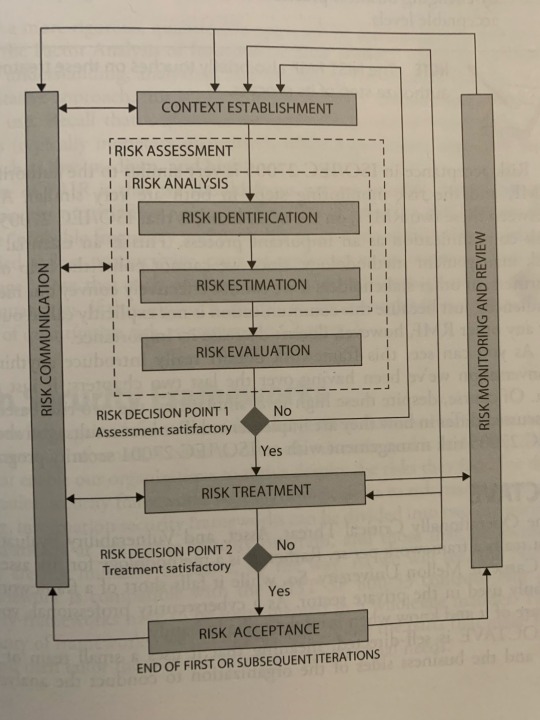
If you work in information security you too can study the world’s most boring, obvious diagrams
#oh I need to assess risks before I decide what to do about them???#amazing#don’t get me wrong#i got into this field because flowcharts and other node-graphs are my favorite way to express information#But I have been reading 30+ pages about how risk management is all about managing risk#also there’s no entry point into this graph#help im trapped in a risk management process and there’s no way out#the Minotaur’s labyrinth except it’s just a 9-5 desk job#wait that’s just called being alive#hmm#actually they should show this diagram during sex ed
8 notes
·
View notes
Text
Touched blender again yey
#just did some casual ball rigging :^#3D is so scary man#oh u wanna make cool thing? oh its fine u just need to make the geometry (modelling) and if its too complicated you might need to sculpt it#and then retopo it#and to make it move u have to rig it and paint the weights or it fucks up and if u fuck up the constraints it also fucks up and there is a#script that allows u to map the controls to the ui that almost nobody teaches about but if u wanna make good rig its there u know#and also if u wanna render it cool there is a fuckton of nodes in spaghetti editor#and also there is animation ans u need to touch this mathematical nightmare called graph editor-#and im scary of doing stuff wrong so i just keep delaying it lol#but! im trying to get back on it!!#one thing at a time lol if i start i may finish it sooner#if i keep delaying it will take longer#*sobs* aw man#dont get me wrong its a beautiful craft that i respect a lot but it makes my anxious brain go oh no scary#and blender is much more casual than maya-maya's spaghetti editor is so much worsttt
3 notes
·
View notes
Text
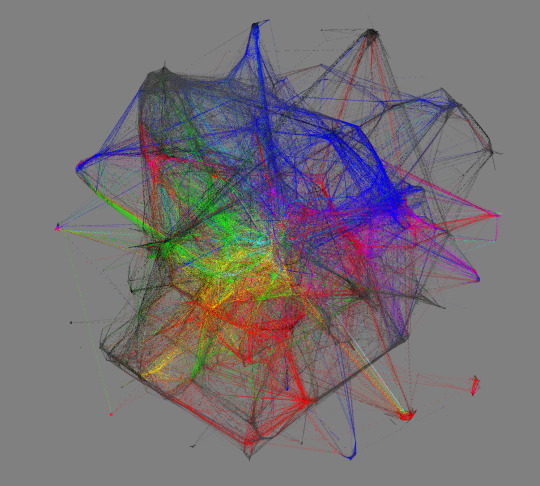
This is what music looks like . Well I think this is more like one hemisphere of music maybe. This is what a LOT of music, but not all of it, looks like
2 notes
·
View notes
Text

ohhh you knowww
3 notes
·
View notes
Text
i will give you all only a SINGLE guess as to which part of this giant node graph is about SCPs. only one guess. very difficult. impossible even.
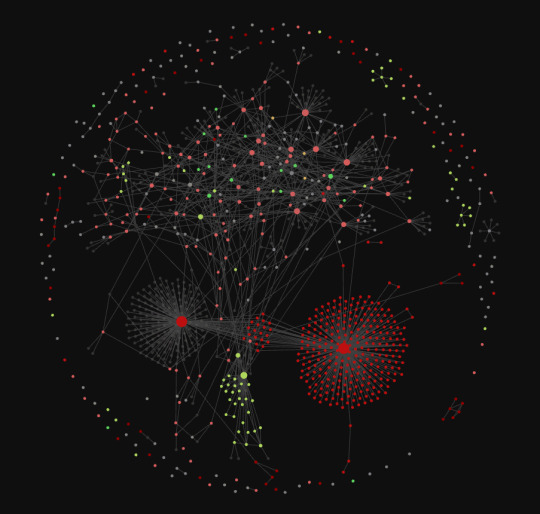
1 note
·
View note
Text
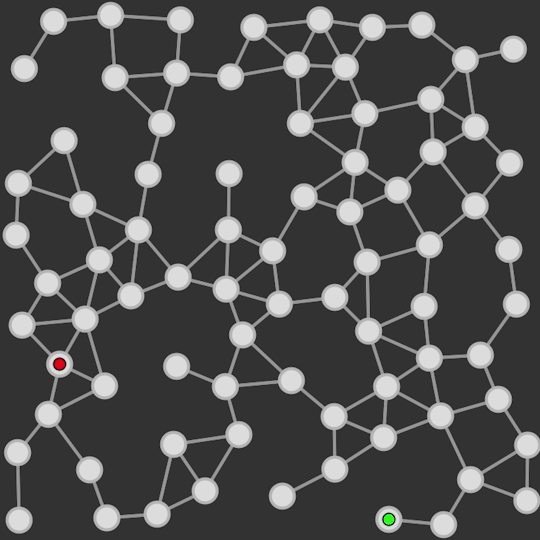
Pathfinding tutorial: Exploring a node graph using depth first search whilst searching for a goal point.
The depth first search algorithm will explore the first node it finds and continue picking the first connected node until it either finds the goal or runs into a dead end. At which point it will backtrack and pick the next unexplored node. It will continue doing this until the goal is found or every node is explored.
Exploring all the nodes in a node graph using depth first search

#gamedev#indiedev#game development#maze#pathfinding#node graph#coding#creative coding#programming#processing#java#graph theory#search algorithm#tutorial#education
10 notes
·
View notes
Text
reblog graph for oasis got me emo
#did everyone else know that this reblog graph thing existed??#but also wow its pretty interesting to see it like that and see the different nodes#esp for oasis bcs thats probably my most reblogged fic ever#me.txt
0 notes
Text
Graph Neural Networks: Revolutionizing Data Analysis in Graph-Structured Domains
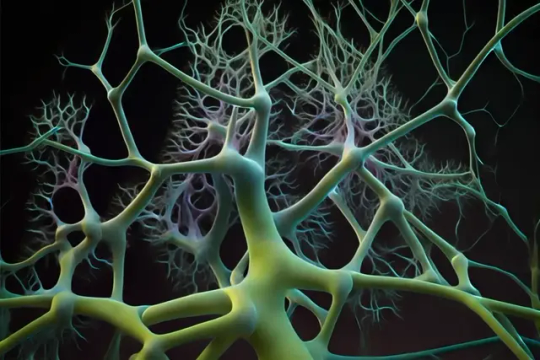
Graph Neural Networks (GNNs) represent a paradigm shift in the realm of neural networks, uniquely tailored for graph-structured data. They are pivotal in addressing complex data scenarios where traditional neural networks fall short. This comprehensive article delves into the core functionalities, applications, and future potential of GNNs.
Understanding Graph Neural Networks
Direct Application to Graphs GNNs' foremost strength lies in their direct application to graphs, facilitating node-level, edge-level, and graph-level prediction tasks. This flexibility proves invaluable across various fields where data is intrinsically relational, such as analyzing social networks, understanding molecular structures, and optimizing communication networks . Processing Complex Graph-Structured Data GNNs excel at processing and analyzing intricate graph-structured data. This capacity unlocks new avenues in numerous domains, including network analysis, computational biology, and the development of advanced recommender systems . Dependence on Graph Structure Central to GNNs' functionality is their ability to capture the dependence of graphs through message passing between nodes. By leveraging the inherent structural information of graphs, GNNs can make more accurate predictions and analyses, a critical aspect in fields like network security and structural health monitoring .
Expansive Applications of GNNs
Versatility in Various Fields GNNs' adaptability to graph data makes them invaluable in areas where relationships and connections are crucial. This includes, but is not limited to, social network analysis, drug discovery and chemistry, traffic flow prediction, and biological network analysis . From Foundations to Frontiers Spanning from basic concepts to cutting-edge advancements, GNNs are continually evolving. Ongoing research and development are likely to amplify their capabilities, making them even more effective in handling diverse, graph-related challenges .
How can Graph Neural Networks be used in Generative Art?
Graph Neural Networks (GNNs) have significant potential in the realm of generative art, leveraging their unique capabilities in understanding and manipulating graph-structured data. Here are some ways GNNs can be applied in this field: - Modeling Complex Relationships: GNNs can model intricate relationships and patterns within data. In generative art, they can analyze the structure of artistic elements, like color, form, and composition, to generate new artworks that maintain stylistic coherence or offer novel artistic interpretations. - Link Prediction for Artistic Elements: GNNs are adept at inferring missing links or detecting spurious ones in graph data. This capability can be used in generative art to predict and create connections between different artistic elements, leading to the generation of visually cohesive and complex artworks . - Learning Node Embeddings: In the context of generative art, GNNs can learn embeddings (representations) of various artistic elements. These embeddings can capture the nuances of style, technique, and other artistic features, which can then be used to generate new art pieces that reflect certain styles or artistic trends . - Message Passing for Artistic Interpretation: GNNs use message passing to understand graph structures, which can be applied to the way different elements in an artwork relate to each other. This can help in creating art that dynamically changes or evolves based on certain rules or inputs, adding an interactive or adaptive element to the artwork .
Python code example of a Graph Neural Networks
Here's a basic example of implementing a Graph Neural Network (GNN) using PyTorch. This code demonstrates the creation of a simple GNN for node classification on a graph: import torch import torch.nn as nn import torch.nn.functional as F from torch_geometric.nn import GCNConv # Define a simple GNN model class GCN(nn.Module): def __init__(self, num_features, num_classes): super(GCN, self).__init__() self.conv1 = GCNConv(num_features, 16) self.conv2 = GCNConv(16, num_classes) def forward(self, data): x, edge_index = data.x, data.edge_index # First Graph Convolutional Layer x = self.conv1(x, edge_index) x = F.relu(x) x = F.dropout(x, training=self.training) # Second Graph Convolutional Layer x = self.conv2(x, edge_index) return F.log_softmax(x, dim=1) # Example usage num_features = 10 # Number of features per node num_classes = 3 # Number of classes for classification model = GCN(num_features, num_classes) This code defines a simple two-layer Graph Convolutional Network (GCN) using PyTorch and PyTorch Geometric. The model takes in the number of features per node and the number of classes for classification. Each convolutional layer (GCNConv) in the network processes the graph data, applying a graph convolution followed by a ReLU activation and dropout. Note: This is a basic example. For a real-world application, you would need to provide graph data (nodes, edges, node features) to the model and train it on a specific task like node classification, link prediction, etc.
🌐 Sources
- AssemblyAI - AI trends in 2023: Graph Neural Networks - ScienceDirect - Graph neural networks: A review of methods and applications - arXiv - Generative Graph Neural Networks for Link Prediction - YouTube - AI Explained: Graph Neural Networks and Generative AI - Medium - Top Applications of Graph Neural Networks 2021 - Towards Data Science - Applications of Graph Neural Networks - XenonStack - Graph Neural Network Applications and its Future - arXiv - Graph Neural Networks: Methods, Applications, and - neptune.ai - Graph Neural Network and Some of GNN Applications - sciencedirect.com - Graph neural networks: A review of methods and applications - frontiersin.org - Graph Neural Networks and Their Current Applications in - Jonathan Hui - Applications of Graph Neural Networks (GNN) - Medium - GNN python code in Keras and pytorch - Towards Data Science - How to Create a Graph Neural Network in Python - DataCamp - A Comprehensive Introduction to Graph Neural Networks - GitHub - Hands-On-Graph-Neural-Networks-Using-Python - Towards Data Science - Graph Neural Networks in Python - Analytics Vidhya - Getting Started with Graph Neural Networks Read the full article
#DataAggregation#Deeplearning#Edge-levelPrediction#GNNApplications#GraphConvolutionalNetworks#GraphNeuralNetworks#Graph-levelPrediction#NetworkAnalysis#Node-levelPrediction#Non-EuclideanData
0 notes
Text
tags to frighten a vinny in 2015





#these have to be manually searched for in the reblog graph node web because they don't show up under ''reblogs and tags'' or comments or any#or anything
1 note
·
View note
Text

❝ ...A core, huh? ❞
Nywe turned her head to look at the payphone located near the stage and squinted. Indeed, there was a blue flame popping out of the object, with a bright white spot at the center that seemed to beckon her.
❝ Oh! I see it now. I'm gonna try and reach it— ❞
She let out an undignified yelp as her (spiritual) body got dragged from the spotlight to the payphone cabin. Ghost travel was so fast! If only tangible human bodies were capable of something like this.
Once inside the cabin, Nywe's eyes widened at the display in front of her. A myriad of telephone lines extended in all directions like crimson tendrils, pulsing rhythmically with small bursts of energy. It was breathtaking and terrifying at the same time; one of the many mysteries of the Ghost World that she had come to witness.
❝ Sissel! ❞ Nywe exclaimed, her voice trembling with fear. ❝ I think the payphone is cursed or something! ❞
❝ I can see many red lines sprouting from it! ❞

"Well, I don't exactly blame them. It looked like an accident to me too."
A rarity in his career of changing people's fates. Far more often it was murder or murder-adjacent.
"Got it. Sounds like you know this area better than I do. The dead don't really need to go to hospitals often, so."
Though Sissel frowns as the fellow spirit struggles to jump from core to core. It always was one of the more difficult things to explain how to do.
"It's a bit tricky to explain..."
The pun was not intended.
"We can if there are no other cores to jump to but usually no. See that pay telephone down there? It has a core. Try reaching out to it. Kind of like reaching out your arm toward it."
Once on the ground, more cores would be within reach for them to jump to in order to try and navigate their way to the hospital this girl spoke of. Unfortunately, Sissel didn't have a phone line saved to it, for it would make everything much easier. Maybe they could use a number he had saved to go somewhere closer to the hospital? It depended on what direction the hospital was in.
#// I came up with the idea that Nywe can see telephone lines even if she hasn't traveled through them#// but this power is capped to lines that lead to payphones exactly 1 jump away from the one she's in (so as not to make this too OP)#// (like if we were in a graph: Nywe can only see the nodes at distance 1)#// (further nodes are unreachable unless she has visited them beforehand)#// still; if you're not comfortable with this let me know and I'll fix the reply!#「 ✰ 」 : ic#「 ✰ 」 : au ➜ a stranded spirit [ Ghost Trick ]#shallliveoninsong
11 notes
·
View notes
Text

REPLACEMENT
The itch had begun an hour ago, somewhere down at the base of her skull. She'd thought nothing of it at first. She was deep in meditative thought, doing what she loved best: postulating graph nodes and arcs, verifying loops and connection-points and—
It wouldn't go away. She tried to maintain focus, but it was no use. At last she stirred, rolled her shoulders and clacked her jaws in discomfort.
The noise awakened two of her brethren who sat in alcoves nearby. Their eyes glowed in the dark of the deep cave, annoyed at the disruption of their own meditations. She bared teeth, and they left her alone. She wished that she could dismiss the itch just as easily.
To her left, down below her own alcove, another of her brethren appeared in a puff of closing vacuum and stepped out onto the vast Amaja which dominated the center of the cave. The flat area was intricately carved with cartographic notations: the accumulated efforts of many thousands of journeys through the pathways of warped space which made up the universe.
She watched as her brother stooped far below to scratch a tiny addition to one of the many offshoots of offshoots of paths that made up the Great Map. Her eyes widened, and a sharp anticipation filled her: Her duty and the duty of all her people, was to maintain this map and to refine it, to keep the fixed points true, and to keep the Void at bay. It had been so long since the last Addition. She would have to study this new feature, trace its contours, commit it to memory, and then—
No, not right now. Right now...the itch! It was a mounting pressure, pushing everything else aside. She slumped against the stone and writhed, trying to shift her body, trying to get away, but she couldn't. Her jaw clenched tight, and she raised clawed hands to her head....
Something changed. She sat bolt upright, and the feelers on her head twitched back and forth. Her jaws click-clacked involuntarily, and the two pairs of eyes glared at her again, but she paid them no heed. A door opened in the back of her mind somewhere, and she was hearing something...seeing...knowing something. It was a path, down by the south margin of the larger whorl of the Map. Had it always been there? She'd never noticed....
Abruptly, her mind was there, though her body was not: Her awareness traced the pathways and alighted upon a desolate island, flanked by crashing waves and jagged rocks. This was new to her...she had never fully projected before—that was an ability reserved only for the elders, wasn't it?
The landscape impressed itself upon her awareness—dull rocks and clinging, silver lichen—and somehow, it was all familiar. How could that be, when she'd never traveled there before? Or maybe...maybe she had forgotten? Impossible.
The itching sensation consumed her again, and her mind was pulled further: Now a decrepit fortress rose in her vision. Once more she found that she knew the path, all the way in, through the walls, into stone.
A blue-armored figure tapped its foot in a gray chamber. Its eyes turned round the room, turned, turned...then fixed on her.
Those eyes were familiar too.
Another rush of closing vacuum, and her body vanished from the alcove in the far away cave. The network of the Great Map opened, and she skipped from junction to junction along the clusters of warp-veins and capillaries. Down a side-path, she felt her awareness fixate for a moment on a small islet, where a crushed corpse lay under the daystars, and she understood....
By the time she appeared before the ancient blue-armored Toa, more memories had solidified. Memories of training, of testing...but were they her memories? They seemed real, but how could she know?
"Botar," the Toa said, frowning a little. "Took you three seconds longer than usual."
"The...the Botar is dead," she replied, her tone flat. The words simply came out of her, like a pre-recorded message.
The Toa's eyes widened imperceptibly. A moment passed.
"Well," the Toa said, "it's not the first time. Do you know me?"
Memories of training, of testing....
"Yes. You are...Toa Helryx."
"Just Helryx. I am no Toa. Do you know yourself?"
"I do."
"And who are you?"
A crushed corpse, under the daystars....
"I am...the Botar."
"And the Botar serves the Great Spirit."
"The Botar serves..." she trailed off.
"...Yes?"
To maintain the map...to keep the fixed points true...to keep the Void at bay.
"The Botar serves the Great Spirit," she said, and again the words seemed like they'd already been said for her. "The Great Spirit has called, and I have come."
"Affirmative," Helryx replied, smiling a little. "Hopefully you weren't in the middle of anything."
Postulating graph nodes and arcs...verifying loops and connection-points....
"No...nothing."
"Good. Then let's get back to work."
209 notes
·
View notes